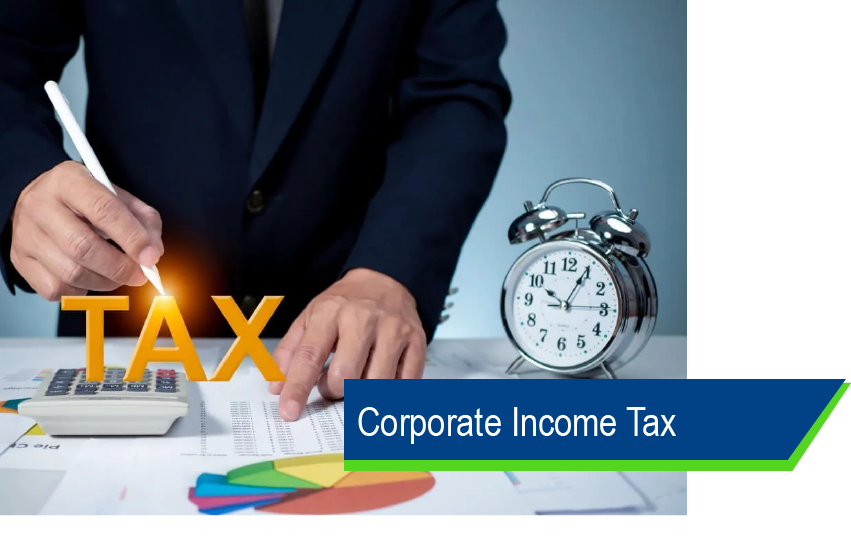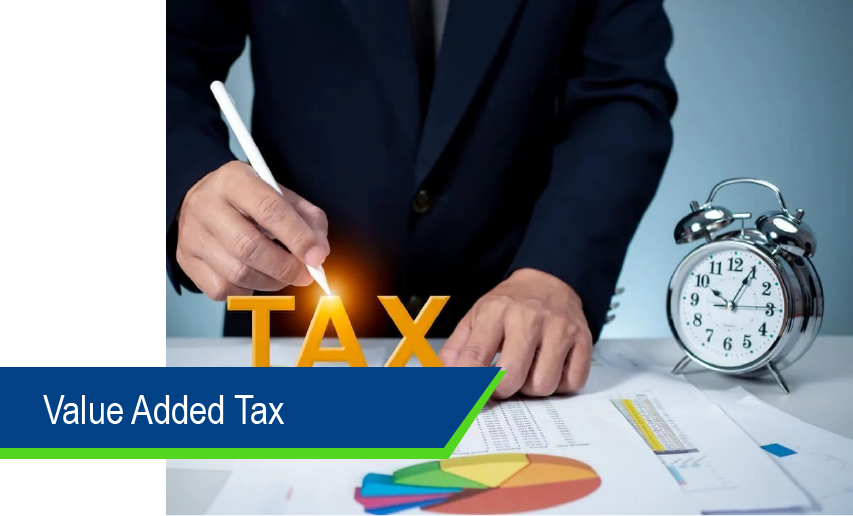China Taxation
China Taxation
Corporate Income Tax
Value Added Tax
Customs Duty
Individual Income Tax
Real Estate Tax
Land Value Added Tax
Stamp Duty
China Taxation
In the current tax system, China’s taxation includes taxation on turnover (including value added tax, consumption tax, business tax and customs duty), taxation on profits/income (including corporate income tax for enterprises with foreign investment and foreign enterprises, and individual income tax), taxation on property and deeds (including real estate tax, contract tax and stamp duty), and taxation on natural resources (including resources tax), which are respectively in relation to different objects of taxation.
Moreover, China’s taxation can be categorised into central taxation, local taxation, as well as local & central sharing taxation, in terms of revenue attribution and collection jurisdiction, according to which, the tax preferences and tax rates enjoyed by different corporations are always different.
In Conpak CPA Limited, tax professionals experienced with many years of domestic taxation handling are proficient in the assessment of tax risks of investment projects, for clients. They can provide tax planning and consulting which suitable to a company’s operating program, solve relevant tax issues for clients who are operating in mainland China, and help foreign staff process their individual income tax, and other services. By virtue of our tax consulting service, corporations served by us will have a greater competitive edge.
Our Services Include:
- Long-Term Tax Advisory
- Application and Advisory for Tax Preferences
- Tax Declaration
- Individual Income Tax Declaration for Foreigners
- Tax Planning of Fixed Assets
- Customs Duty and Goods Tax Advisory
- Domestic Investment Structure Assessment
- Transfer Pricing Service
- Provision of the Latest China Taxation Ordinances, Amendment of Rules and Regulations, as well as Practice Bylaw Materials.
Corporate Income Tax
Enterprise Income Tax is a tax imposed on income derived from production activities and business operations by enterprises within China and other organisations. Taxpayers of Enterprise Income Tax shall pay the Enterprise Income Tax in accordance with Enterprise Income Tax Law of the People’s Republic of China, except for sole proprietorship and partnership.
- The corporations within China and the profit organisations are the taxpayer of corporation income tax.
- Corporations were distinguished Resident Corporation from Non-resident Corporation.
- Resident Corporation is the corporation which enrolled in People’s Republic of China and enrolled in other country but the management organisation is in China.
- Non-resident Corporation is the corporation which enrolled in other country and the management organisation is not in China, but has establishments or places within China. Or else, it doesn’t have establishments or places in China but there are some profits derived from sources within China.
- Resident Corporation should be taxed on their profits derived from sources within or out of China.
- Non-Resident Corporation which has establishments or places in China should be taxed the Corporation Income Tax on their profits derived from the establishments or places in China, and the profits doesn’t derived from China but have relationship with the establishments or places in China should also be taxed. The corporations which doesn’t have establishments or places in China and have establishments or places in China but their profits doesn’t have relationship with the establishments or places should be taxed the Corporation Income Tax on their profits derived from sources within China.
Tax Rate of Corporation Income Tax
| Type of Corporation | Tax Rate |
| Ordinary Corporation | 25% |
| Especial Support High-Technology Advanced Corporation | 15% |
| Mini-type Small Profit Corporation: Enterprises engaged in industries that are not restricted or prohibited by the state and meeting the three requirements of not exceeding RMB 3 million in annual taxable income, not exceeding 300 employees, and not exceeding RMB 50 million in total assets. |
20% |
Corporation annual taxable year’s total profits, deduction of non-tax profit, exempt-tax profit, costs, expense, taxes and the last taxable year’s losses.
Income Tax Payable = Taxable Profit × Tax Rate
- Tax department is entitled to regular according reasonable method if the business between corporation and affiliated part doesn’t accord with Independent Business Principle; reduce corporation or their affiliated part’s tax profit or income.
- Corporation could request tax department to put forward the business price tenet and account method between corporation and their affiliated part; tax department would discuss that with corporation and preengage the price after corporation affirmance.
- Low-rate Preferential Enterprise Income Tax Policy
- Qualified small low-profit enterprises: 20%
- During the period from 1 January 2019 to 31 December 2021, the income tax for a small-sized meager-profit enterprise shall be calculated at progressive rates. If the annual taxable income does not exceed 1 million yuan, the enterprise income tax shall be paid on 25% of the taxable income at the rate of 20%.
- Qualified enterprises with core intellectual property supported vigorously by the state and meet specific conditions: 15%
- Tax-exempt Income
- Interest income derived from national debt
- Dividend, bonus and other equity investment income among qualified resident enterprises.
- Income derived from equity investment, such as dividend and bonus, which obtained from resident enterprises by non-resident enterprises that have set up institutions or establishments in China with an actual relationship with such institutions or establishments
- Specific income of qualified non-profit organisations
- Tax-exempt and Tax-reduced Income
- Income derived from projects in relation to agriculture, forestry, animal husbandry and fisheries by enterprises
- Income derived from investment and operation of infrastructure projects supported by the state vigorously
- Income derived from qualified projects in relation to environmental protection, energy and water conservation
- Income derived from qualified transfer of technology by enterprises
- Non-resident enterprises
- Small low-profit enterprises
- High-tech enterprises
- Tax Reduction or Exemption for Autonomous Regions
- Weighted Deduction
- Research and development expenses
- payroll to placing people with disabilities and people who are hired encouraged by the state
- Deductible Taxable Income
Venture investment enterprises engaging in venture investment that are encouraged and supported by the state may offset the taxable income at a certain ratio in proportion to capital invested in.
- Accelerated Depreciation
Technology advancement is one of the reasons that accelerated depreciation of fixed assets is necessary, shortening depreciation life or adopting accelerated depreciation method.
- Deduction of Taxable Income
The income obtained by enterprises which derived from the products in line with the state’s industrial policies through comprehensive use of resources may be deducted from the taxable income.
- Deduction of Payable Tax
- The investment of enterprises on procurement of special facilities for environmental protection, energy and water conservation and safe production may be subject to a deduction of tax at a certain ratio.
- According to the regulations for the implementation of the Transitional Preferential Enterprise Income Tax Policy and the Enterprise Income Tax Law, regular tax reduction and exemption and preferential policies on low tax rate cannot be enjoyed concurrently. Changes would not be allowed once chosen. Qualified enterprises can enjoy such concurrently in accordance with the Enterprise Income Tax Law and the regulations for the implementation of the preferential tax policies.

Value Added Tax

Value added tax is a kind of turnover tax imposed on the newly-increased value; that is, the additional value of goods in various links from commodity production to circulation. All corporations and persons engaged in the sales or importation of goods, provision of processing, repairs and replacement services within the territory of the People’s Republic of China are taxpayers of Value Added Tax (hereinafter referred to as “taxpayers”).
- The sales of goods
- The provision of processing, repairs and replacement
- The importation of goods
It is based on the sales amount; that is, all money received from purchasers by taxpayers selling the goods or providing the taxable services.
- Tax Payable by General Taxpayers=Tax Payable on Sales in Current Period - Tax Payable on Purchase in Current Period, where
- Tax Payable on Sales means the VAT computed received from the purchasers by the taxpayers selling goods or providing taxable services according to stipulated VAT rate
- Tax Payable on Purchase means the VAT paid by the taxpayers purchasing goods or accepting taxable services, which in comparison with the foregoing Tax Payable on Sales received by the sellers, is paid by the purchasers.
- Tax Payable by Small-scale Taxpayers = Tax-including Sales Amount ÷ (1+Tax Rate)× Tax Rate
- Tax Payable by Taxpayers Exporting Goods = (Dutiable Value +Tariff+Excise Tax) × Tax Rate
- Sales link
- Processing link
- Import link
- Productive enterprises and foreign-trade enterprises empowered to manage exportation are entitled to free export and refund on their value added taxes
- Small-scale taxpayers are entitled to free export but no refunds
- Taxpayers exporting goods restricted by the Country are not entitled to free exports or refunds
The assessable period for tax payment is usually one month or one quarter. The specific period shall be determined by the competent tax authority according to the amount of tax payable.
General taxpayers who have obtained the right of import and export may enjoy export tax rebates if they export the duty-free goods or the goods under export restriction and prohibition as specified in the tax law. Small-scale taxpayers are not entitled to export tax rebates.
- If the total monthly sales amount of a small-scale taxpayer does not exceed 100,000 yuan (for small-scale taxpayers whose assessable period is one quarter, if the quarterly sales amount does not exceed 300,000 yuan, the same below), or if the total monthly sales amount is less than 100,000 yuan after deducting the sales amount of real estate occurring in the current period, the VAT shall be exempted.
- Where a general VAT payer sells the integrated circuits or software products produced by itself, the policy of tax refund upon collection applies to the part exceeding 3% of actual tax burden.
- Agricultural products, grain and oil, coal gas and chemical fertilizers shall be taxed at the rate of 9%.
Customs Duty
Tariff is chargeable on all goods permitted to be imported into or exported out of the People’s Republic of China. There are four levels of import tariff rates and one level of export tariff rate.
Pursuant to international practices, China will apply different tariff rates for imported goods with different places of origin. Currently, it basically applies two internationally accepted origin criterias which are “Whole Origin Production Criterion” and “Substantial Processing Criterion”.
- Computation of ad valorem tariff formula is as follows:
Tariff Payable = Quantity of Taxable Import/Export Goods × Unit Dutiable Value × Tariff Rate - Computation of specific unit tariff in the following formula:
Tariff Payable = Quantity of Taxable Import/Export Goods × Unit Tariff - Computation of composite tariff payable:
China now adopts a composite tariff which first comprises specific unit taxation and ad valorem taxation secondly
Tariff Payable = Quantity of Taxable Import/Export Goods × Tariff per Unit Goods + Quantity of Taxable Import/Export Goods ×Unit Dutiable Value × Tariff Rate - Computation of sliding-scale tariffs payable:
Sliding-scale tariff is a kind of special ad valorem tariff imposed at different rates as it is applicable subject to different prices of goods, which is chargeable at tariff rates fixed from high to low or from low to high and subject to the prices of imported goods
Tariff Payable = Quantity of Taxable Import/Export Goods ×Unit Dutiable Value ×Tariff Rate
Tariff Payable = Quantity of Taxable Import/Export Goods ×Unit Dutiable Value ×Tariff Rate
Tariff Payment
Tariff payers shall, within 15 days from the date of notice demanding tariff sent out by customs, pay the tariff to the banks designated by the customs.
Tariff Preferences
- Goods under a single invoice whose tariff payable is less than RMB50
- The articles for advertising purpose or to be used as samples and therefore of no commercial value
- The fuel, materials necessary for the journey and carried by means of transport that enter into or exit China
- The materials, parts and fittings re-exported after processing materials supplied by clients
- The showpieces, construction machinery, instruments and others, which are allowed to enter into or exit China temporarily and are to be re-carried into or out of China within six months, are temporarily exempt from tariff
- Dutiable Value of Import Goods
The dutiable value for imported goods shall be examined and determined by the customs on the basis of transaction value, which generally comprises the freight, the associated expenses and the insurance premiums incurred prior to the arrival and unloading of the goods at the importing place within the People’s Republic of China; if the transaction value of exported goods is indeterminable, it will be estimated by the customs according to the law. - Dutiable Value of Export Goods
The dutiable value of exported goods shall be examined and determined by the customs on the basis of the transaction value of the goods to be sold abroad, which generally comprises the freight, the associated fees and insurance premiums incurred prior to the arrival and unloading of the goods at the exporting place within the territory of the People’s Republic of China, but excluding the tariffs therein contained; if the transaction value of export goods is indeterminable, it will be estimated by the customs according to the law.
- Import duty rate: 0%–270%
- Export duty rate: 0%–50%

